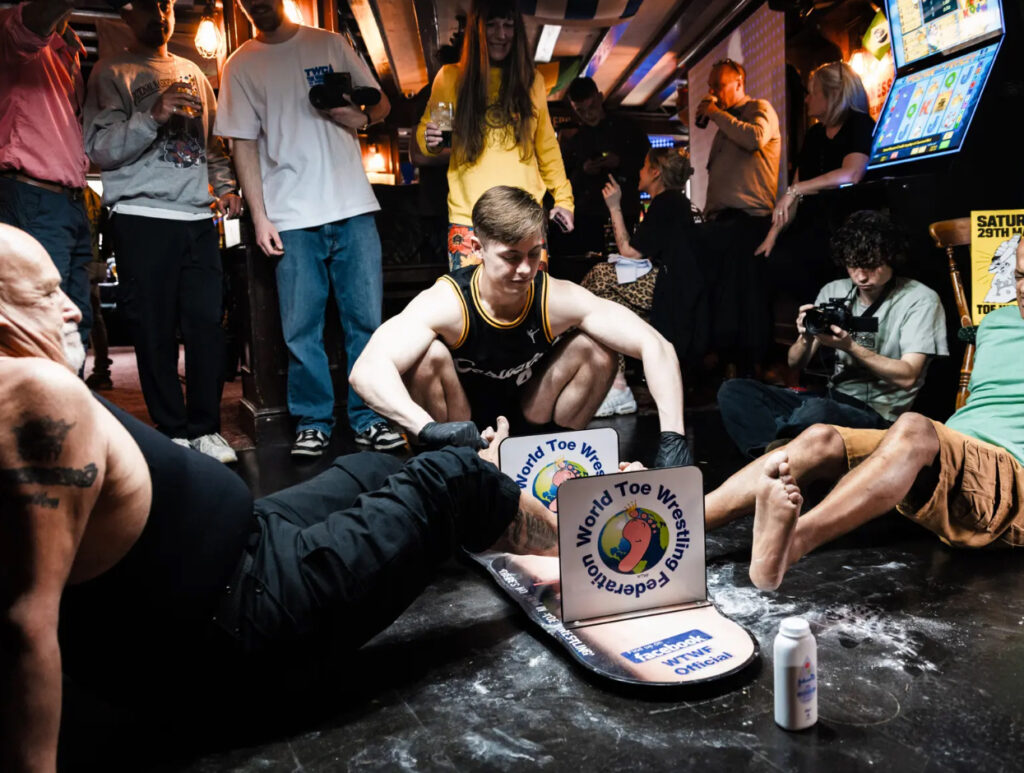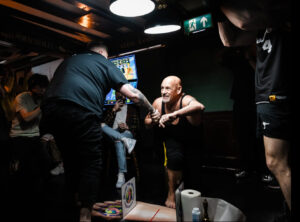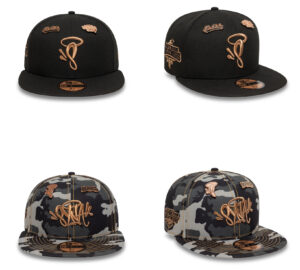In a small village pub somewhere in Derbyshire, a crowd gathers around a wrestling ring—not to watch biceps bulge or shoulders slam, but to witness something far more peculiar. Two competitors lock feet, grip the edge of a wooden plank, and push with all their might. Welcome to toe wrestling, one of Britain’s most bizarre and beloved sporting oddities.
What began as a pub-born joke has transformed into a cult tradition, steeped in both silliness and surprising athletic seriousness. British toe wrestling is equal parts spectacle and sport, a testament to the quirky charm of the UK’s grassroots culture—where oddities are worn proudly, and grit comes in unlikely forms.
Origins: A Pint, a Pub, and a Plan
Toe wrestling was invented in 1976 at Ye Olde Royal Oak Inn in Wetton, Staffordshire, by a group of locals who, dismayed that Britain wasn’t dominating international sports, decided to create a sport the Brits could truly call their own.
The idea? Simple enough: arm wrestling… but with toes. It started as a drunken dare, but the concept stuck, and the pub-goers quickly formalized the rules. The first official Toe Wrestling World Championship was held the following year, and the sport has been going strong—if underground—ever since.
The Rules of Engagement
Toe wrestling is deceptively straightforward. Matches take place in a small ring, with competitors seated on the floor, their legs extended and feet locked. Each round consists of three bouts—left foot, right foot, and a deciding rematch (if needed). The aim? Pin your opponent’s foot to the side wall of the ring using only toe power.
But it’s not just a battle of brute strength. Toe wrestling requires balance, flexibility, psychological stamina, and, crucially, pain tolerance. Toe injuries are common—think sprains, bruises, and the occasional fracture. And yes, competitors must go barefoot—no socks, no shoes, no shame.
To maintain fairness, there’s also a “toe inspection” before every match. Nails must be trimmed, feet must be clean, and any medical concerns could result in disqualification. Hygiene, it turns out, is sacred in the toe-wrestling world.
The World Toe Wrestling Federation (WTWF)
Yes, it’s real. The World Toe Wrestling Federation (WTWF) oversees the sport’s rules and champions. Based in England, the federation organizes annual tournaments and works to keep the tradition alive. While not widely televised, WTWF events draw loyal crowds and increasing interest from curious tourists and sport oddity enthusiasts.
Matches often take place in pubs or community centers, but the World Championship, traditionally held in the village of Fenny Bentley, has grown into a proper event, complete with media coverage, sponsorships, and fierce international competition.
Champions of the Toes: Alan “Nasty” Nash and the Legends
No discussion of toe wrestling would be complete without the sport’s most famous figure: Alan “Nasty” Nash, a multiple-time world champion and undisputed king of the toe ring. With a fierce grip and unmatched strategy, Nash has dominated the circuit for decades, earning not just titles but a cult following.
Nash’s nickname isn’t just bravado—he’s known for his psychological intimidation, mid-match banter, and relentless training. Yes, training. He reportedly strengthens his grip using resistance bands, foot curls, and even custom toe weights. Nash treats toe wrestling like MMA fighters treat the octagon—with reverence and obsession.
Other champions include Lisa “Twinkle Toes” Shenton, a top female competitor, and international challengers from Canada, Germany, and Australia. The rise of YouTube and social media has helped the sport go semi-global, with backyard tournaments popping up far beyond the British Isles.
The Ritual of the Ring
Toe wrestling matches are short but intense, often lasting under five minutes. But the rituals surrounding them are theatrical. Competitors are introduced with nicknames and themes, the crowd often chants, and the match begins with the ceremonial “toe-lock”—a clasp that signals readiness and mutual respect.
There’s also a charmingly absurd seriousness about it all. Referees in striped shirts officiate. Medals and trophies are handed out. And competitors train not just physically, but mentally—studying rival techniques and developing footwork strategies.
Training: More Than Just Wiggling
Believe it or not, toe wrestling has a legit training regimen. Successful athletes work on grip strength, foot conditioning, and flexibility. Yoga is often incorporated for balance. Others use foot-specific tools like toe separators, manual resistance bands, and grip mats.
Core strength is key, too. Since competitors sit upright without back support, they rely on their abs, hips, and legs for leverage and force. Many toe wrestlers also follow strict foot-care routines: soaking, moisturizing, and even avoiding narrow footwear to ensure maximum toe spread.
The Culture: Laughter, Grit, and Loyalty
While toe wrestling may seem like a novelty, its culture runs deeper than laughs and raised eyebrows. It’s a sport born from community spirit, carried by working-class humor, and held up by underdog resilience. It celebrates those who don’t need high-tech arenas or major brand endorsements to compete—just a pair of clean feet and a fierce will.
It also brings together people of all ages. From retired bricklayers to teenage oddball athletes, toe wrestling is open to anyone brave enough to challenge for the title. It’s inclusive, intimate, and proudly strange.
Spectacle vs. Sport
Is toe wrestling a sport or a spectacle? The truth is—it’s both. And that’s part of its charm.
Yes, it has rules, champions, and training. But it also thrives on its campy pageantry, self-awareness, and tongue-in-cheek defiance of conventional athletic norms. It doesn’t apologize for its weirdness. Instead, it leans into it—proving that sports can be serious and silly at the same time.
Toe wrestling is also a commentary on Britain’s broader sporting culture—one that embraces eccentricity, elevates community traditions, and refuses to take itself too seriously. It exists alongside cheese rolling, bog snorkeling, and shin-kicking. And it’s all the better for it.
The Future: From Pubs to Prime Time?
With a growing internet presence and increased media coverage, toe wrestling may be inching toward a bigger platform. There have been whispers of docuseries interest, short-form documentaries, and even celebrity exhibition matches.
But many in the toe wrestling community are cautious about over-commercialization. For them, the sport’s power lies in its authenticity, its pub roots, and its DIY charm. They’re not looking for arenas—they’re looking for community.
Still, the appeal is clear. Toe wrestling is one of the few sports where anyone can start with nothing but nerve and toes. It doesn’t require a big budget, fancy gear, or youth. It only asks for grit, guts, and an iron will from the ankle down.
Thoughts
In a world obsessed with elite sports, glitzy sponsorships, and hyper-polished athletes, British toe wrestling is a refreshing throwback. It’s messy, funny, painful, and utterly human. And that’s exactly why it endures.
Toe wrestling isn’t just about strength—it’s about storytelling. It’s about local legends, lifetime rivalries, and folks who refuse to stop competing simply because they’ve aged out or dropped out of the mainstream.
So the next time someone asks you what real grit looks like, point them to a wooden stage in a Derbyshire pub. Where the feet go bare, the crowd goes wild, and the glory lives between your toes.
No comments yet.










